1. What is Dermorphin?
Dermorphin is a naturally occurring opioid peptide derived from the skin of the South American frog Phyllomedusa sauvagii. It is a potent and selective agonist of the μ-opioid receptor, known for its powerful analgesic effects, which are significantly stronger than morphine. Dermorphin has been studied for its potential use in pain management, and its unique properties have made it a subject of interest in both pharmacology and neuroscience.
2. Dermorphin Structure
3. Dermorphin Research
Dermorphin is a potent, naturally occurring peptide opioid originally isolated from the skin of the South American Phyllomedusa frog species. With its high affinity for mu-opioid receptors (MOR)【https://www.ncbi.nlm.nih.gov/books/NBK535456/】, Dermorphin exhibits a remarkable ability to modulate pain and induce analgesia—far more effectively than morphine and without the same degree of side effects at equivalent doses.
Due to its unique structure and resistance to enzymatic breakdown, Dermorphin is increasingly studied and used in advanced pain management applications, particularly in sports medicine and recovery protocols.
【1】Mechanism of Action
Dermorphin acts as a selective agonist of the mu-opioid receptor, one of the primary receptors involved in pain regulation and endorphin signaling. Upon binding to MOR, it:
Inhibits neuronal excitability and pain transmission in the central nervous system
Activates G-protein-coupled pathways, leading to analgesic and euphoric effects
Reduces nociceptive signaling without the same rapid development of tolerance seen with traditional opioids
Unlike morphine, Dermorphin has been shown to be approximately 30–40 times more potent, while producing less respiratory depression, lower dependence, and a longer duration of action.
See peptide opioid comparative data here【https://pubmed.ncbi.nlm.nih.gov/9635221/】.
【2】Applications in Clinical and Performance Settings
While Dermorphin is not yet FDA-approved for standard pain management, it has gained interest in various fields, including:
🩹 Sports medicine for muscle recovery and pain relief post-injury
💊 Adjunct therapy in opioid rotation protocols or where morphine tolerance is a concern
🧠 Neuroinflammation modulation, with potential cognitive and mood-related benefits due to MOR signaling
🛌 Sleep aid benefits observed indirectly via reduced pain-related insomnia
Its unique structure makes it resistant to peptidase degradation, allowing for longer action per dose when administered intrathecally or via injection.
Explore peer-reviewed studies here【https://pubmed.ncbi.nlm.nih.gov/6144787/】.
✅ Why Consider Dermorphin?
🔹 Extremely potent mu-opioid agonist—30–40x stronger than morphine
🔹 Reduced tolerance development and lower risk of dependency
🔹 Long-acting analgesic effect with single-dose efficacy
🔹 Used in sports recovery and high-level performance settings
🔹 More selective and cleaner profile than many traditional opioids
🔹 Promising pain solution in individuals resistant to other treatments
4. Future Dermorphin Research
【1】Re evaluating Clinical Utility via Intrathecal Delivery
Dermorphin is a potent μ opioid receptor agonist originally isolated from the skin of Phyllomedusa frogs. Clinical interest peaked in the 1980s when a landmark 1985 randomized, intrathecally-administered study demonstrated dermorphin’s superiority to morphine for acute postoperative pain—yet the compound faded from further trials .
Future research should revisit this intrathecal delivery method for two key reasons:
High analgesic efficacy with reduced systemic effects: Dermorphin delivered directly into cerebrospinal fluid offers strong and long-lasting pain relief, potentially minimizing peripheral opioid side effects.
A new pediatric/palliative role: The earlier clinical work suggests promise in specialized contexts (e.g., postoperative pediatric analgesia, palliative care) where low systemic exposure is valuable .
Experts such as Hesselink & Schatman (2018) have called for a formal phase II/III trial—underscoring intrathecal dermorphin’s potential as both a functional and cost-effective alternative in modern pain management.
【2】Novel Peripheral-Selective and Analogue-Based Analgesics
In parallel, preclinical advances are prompting new routes:
A. Peripheral μ Opioid Receptor Agonists
Research has identified dermorphin analogs like DALDA (Dermorphin [D Arg²,Lys⁴] amide) that act peripherally, mitigating neuropathic pain without central opioid side effects 【https://pmc.ncbi.nlm.nih.gov/articles/PMC10903092/?utm_source=chatgpt.com】. For example, DALDA reversed chemotherapy-induced neuropathic pain in rodents, reducing TRP ion channel expression without addiction or CNS toxicity. Future directions include:
Progressing to first-in-human safety and efficacy trials for chronic peripheral pain conditions (e.g., CIPN).
Exploring combination with anti-inflammatory agents to enhance both analgesia and neuroprotection.
B. Tetrapeptide Dermorphin Derivatives
Innovations like the synthetic tetrapeptide H Tyr D Arg Phe Gly NH₂ (a dermorphin tetrapeptide, or DMTP) and glycodermorphins show promise for durable, μ₁ biased analgesia, with improved safety over morphine 【https://www.mdpi.com/2218-0532/93/1/3?utm_source=chatgpt.com】. Next steps should focus on:
Phase I/II dose-escalation and tolerability trials, evaluating pharmacokinetics, side effect profile, and analgesic potency.
Establishing robust quality-control methods, including spectroscopic and mass-spectrometry analytics, to facilitate regulatory approval 【https://www.mdpi.com/2218-0532/93/1/3?utm_source=chatgpt.com】.
【3】Mechanistic Research & Biotechnological Tools
Beyond therapeutic development, dermorphin continues to serve as a versatile tool for receptor research:
A fluorescently labeled dermorphin analog ([Cys(ATTO 488)⁸]-Dermorphin) enables high-resolution visualization of μ opioid receptor (MOP) dynamics—useful for studying receptor internalization, trafficking, and G-protein signaling 【https://journals.plos.org/plosone/article?id=10.1371%2Fjournal.pone.0250011&utm_source=chatgpt.com】.
Conjugates such as dermorphin-saporin target μ opioid expressing neurons in the rostral ventromedial medulla (RVM), achieving analgesia via selective ablation—a technique relevant to neuropathic pain modulation【https://en.wikipedia.org/wiki/Rostral_ventromedial_medulla?utm_source=chatgpt.com】.
Future research may leverage these tools for:
Mapping pain circuits and understanding central opioid mechanisms.
Creating precision therapeutics by engineering dermorphin analogs with tailored receptor bias or cell-targeted conjugates.
5. Application Area
Dermorphin is a potent, naturally occurring opioid peptide known for its high affinity for the mu-opioid receptor and its ability to produce strong analgesic effects. It is primarily used in:
🧪 Laboratory research on pain modulation and opioid receptor selectivity
🧬 Neuropharmacology studies, focusing on central nervous system peptide signaling
💉 Analgesic peptide development, particularly in non-traditional opioid therapies
🧠 Addiction and tolerance research, studying mu-opioid agonist behavior and receptor desensitization
Its high potency and long-lasting activity make it valuable for experimental pain management protocols and investigations into non-synthetic opioid alternatives.
ALL ARTICLES AND PRODUCT INFORMATION PROVIDED ON THIS WEBSITE ARE FOR INFORMATONAL AND EDUCATIONAL PURPOSES ONLY.
The products offered on this website are furnished for in-vitro studies only. In-vitro studies(Latin: in glass) are performed outside of the body. These products are not medicines or drugs and have not been approved by the FDA to prevent, treat or cure any medical condition, ailment or disease. Bodily introduction of any kind into humans or animals is strictly forbidden by law.

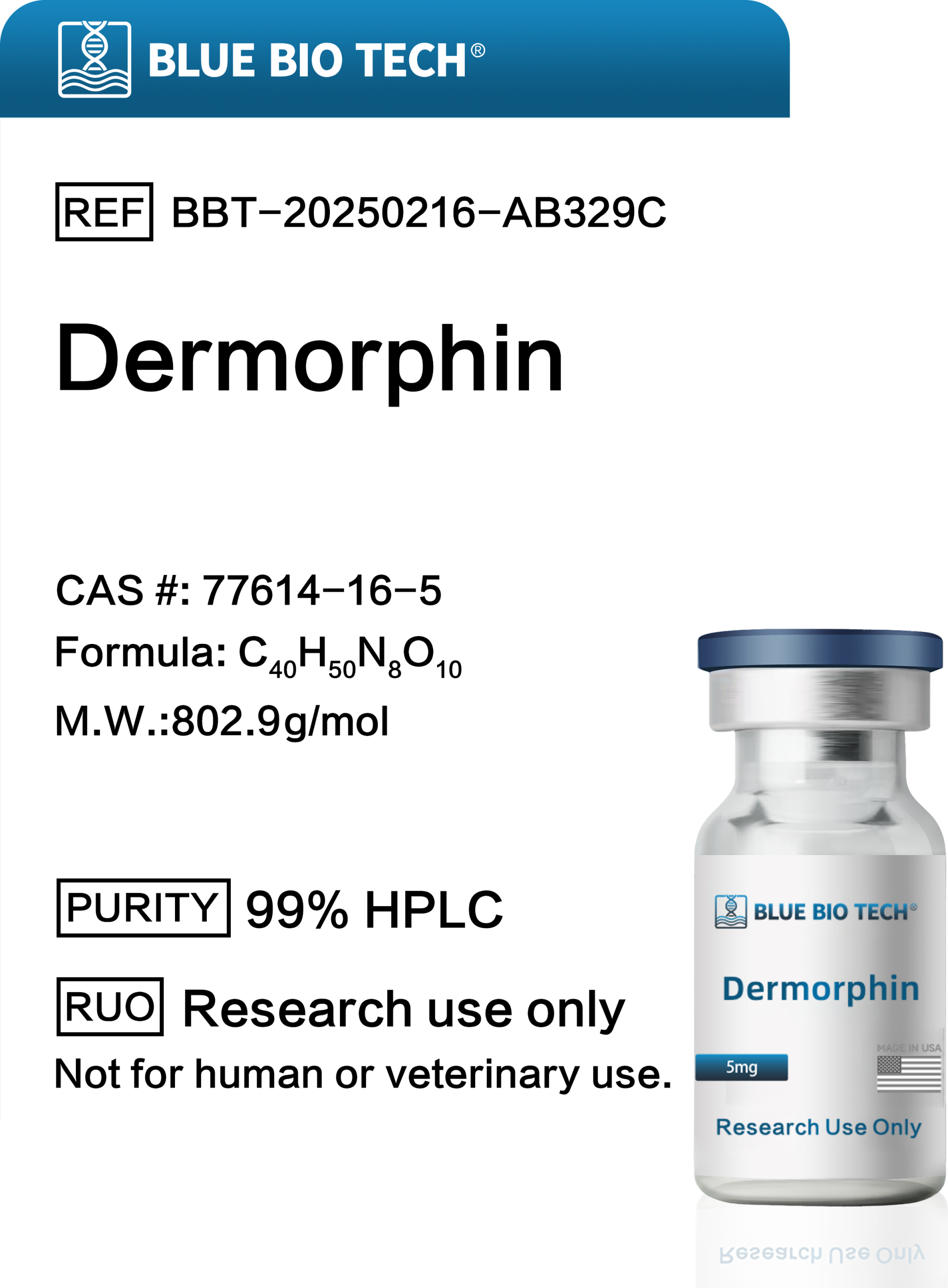
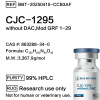
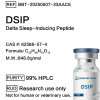

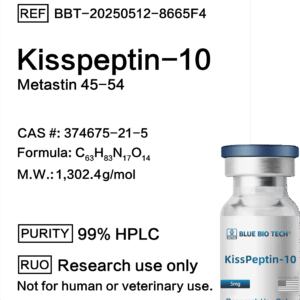
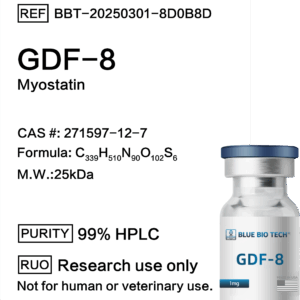
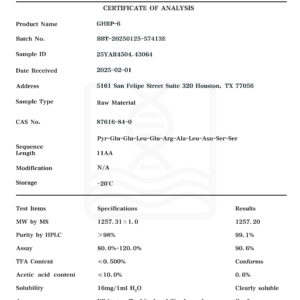
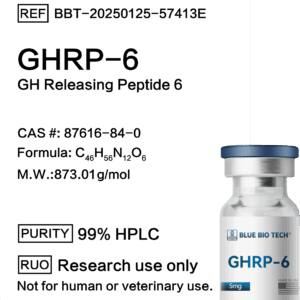
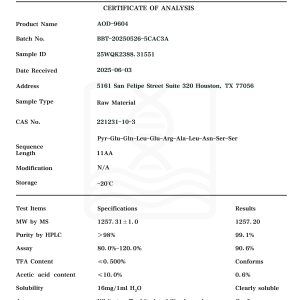
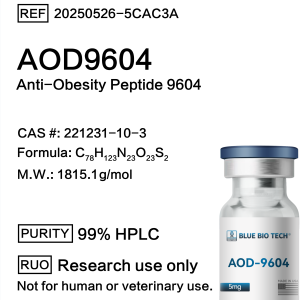
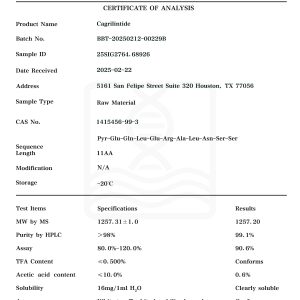
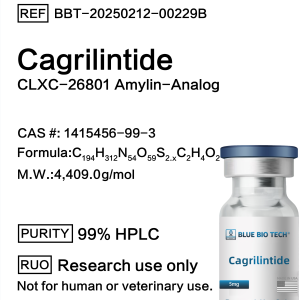
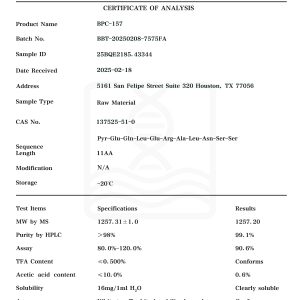
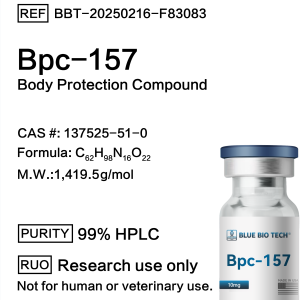

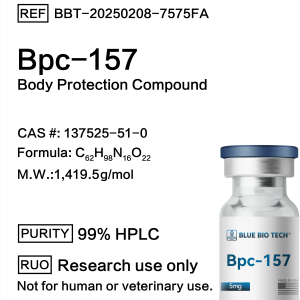
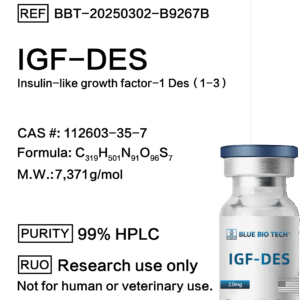


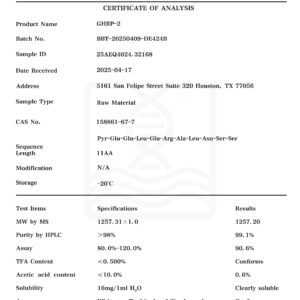
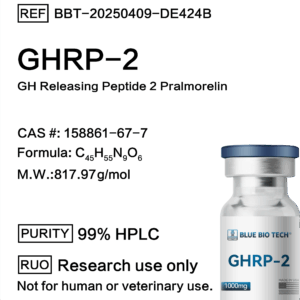

Reviews
There are no reviews yet.